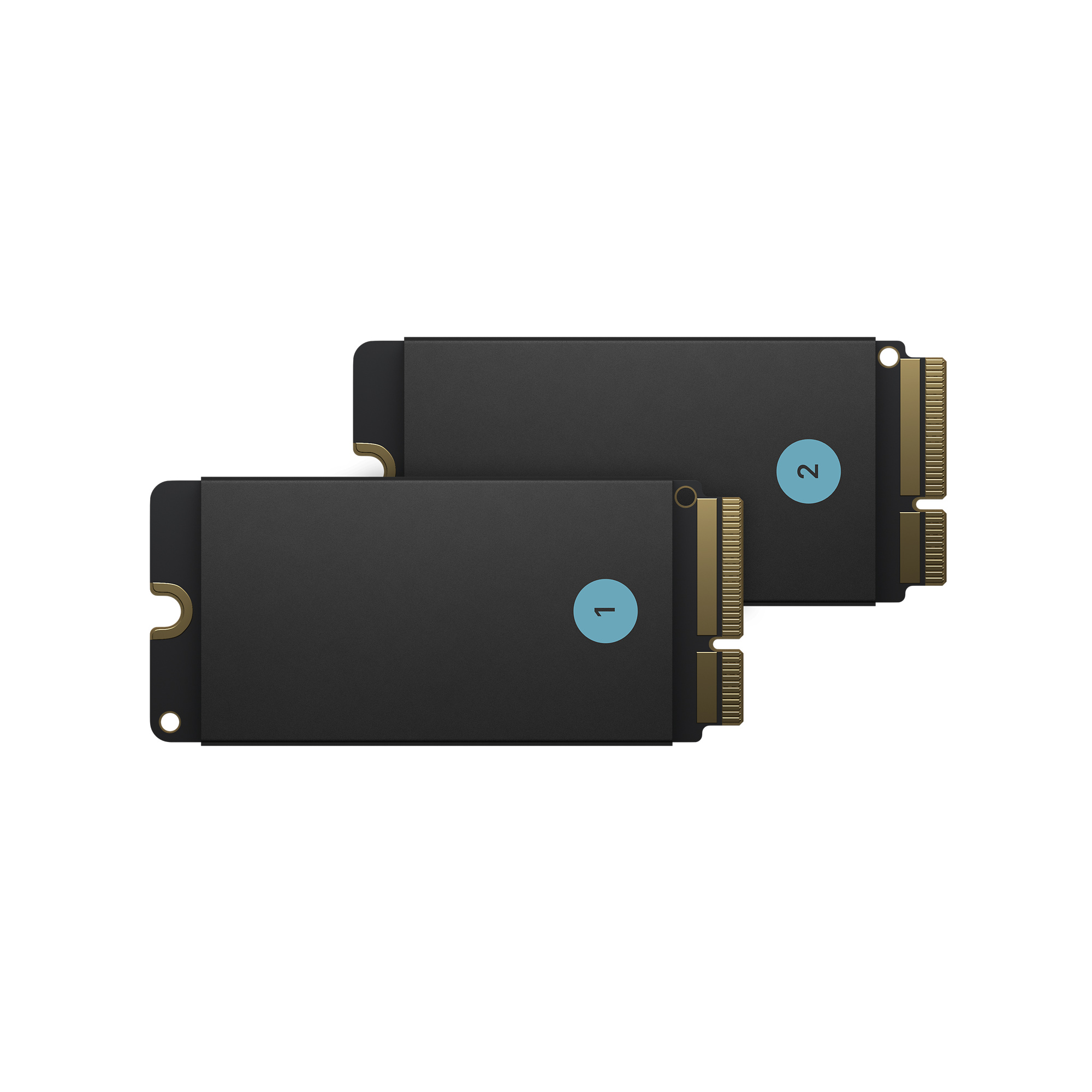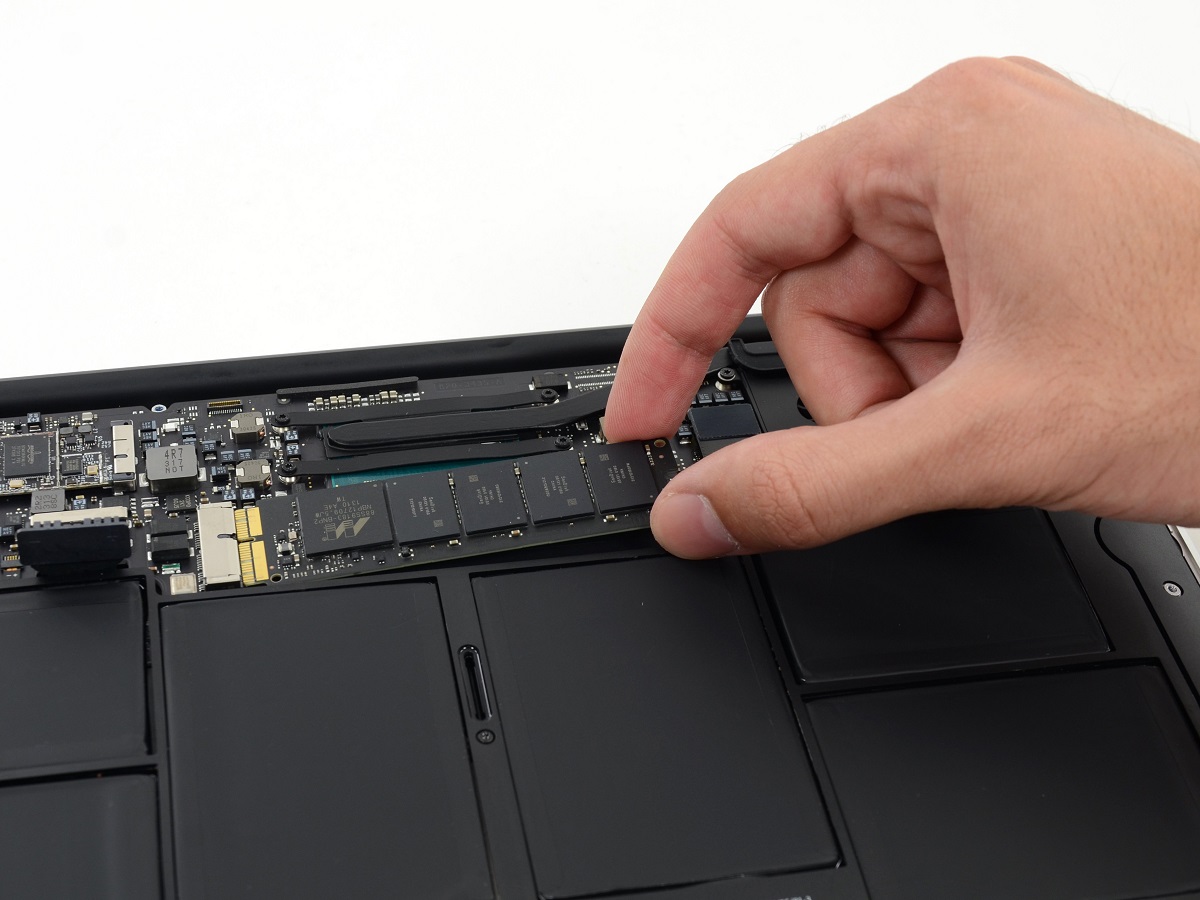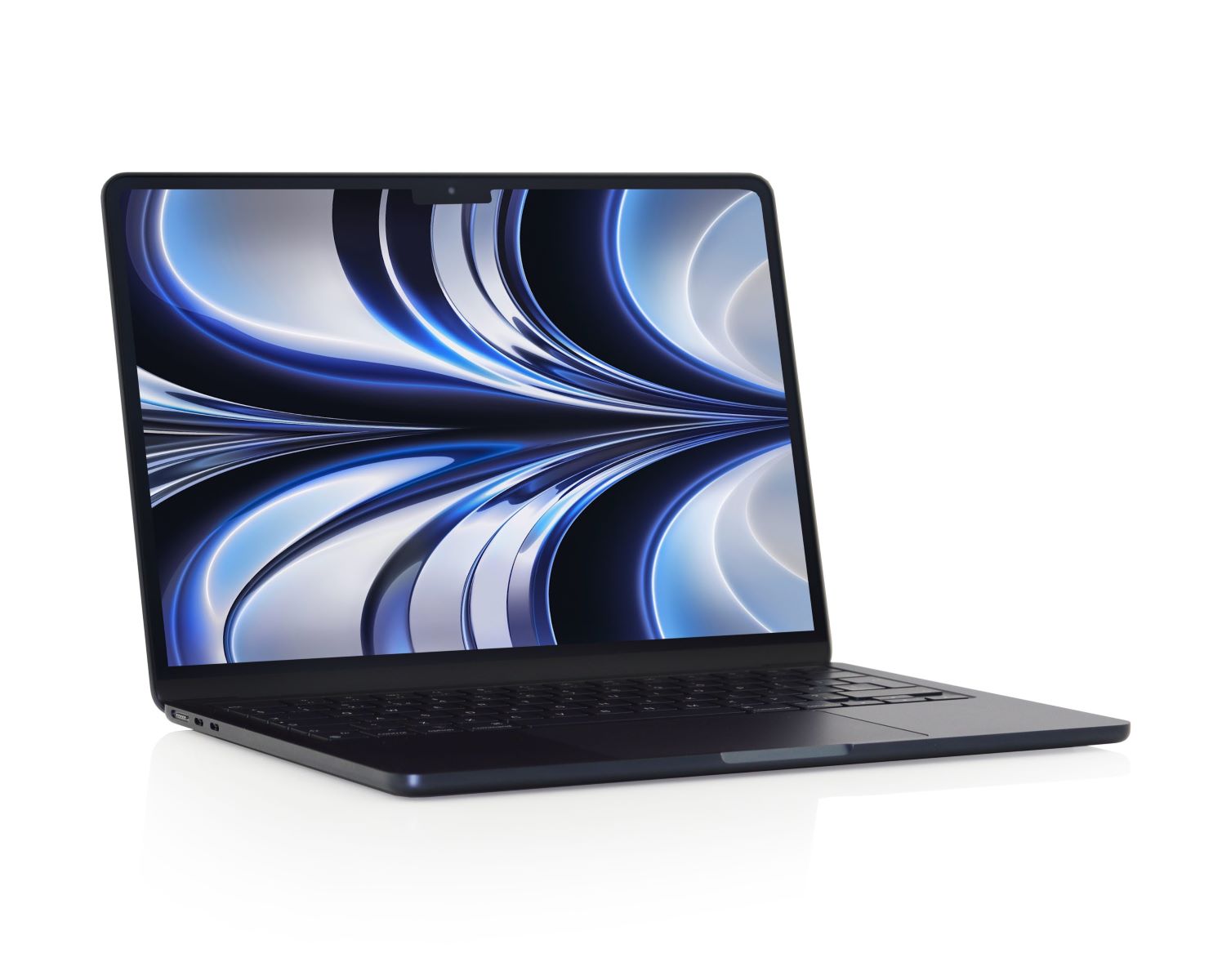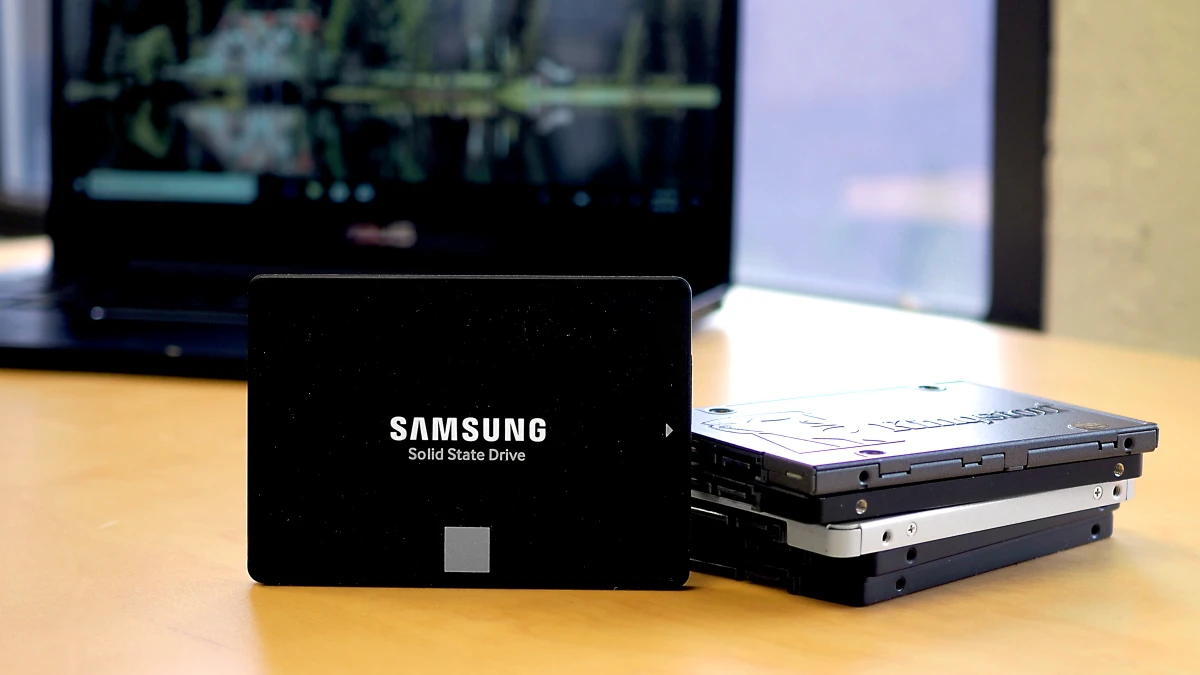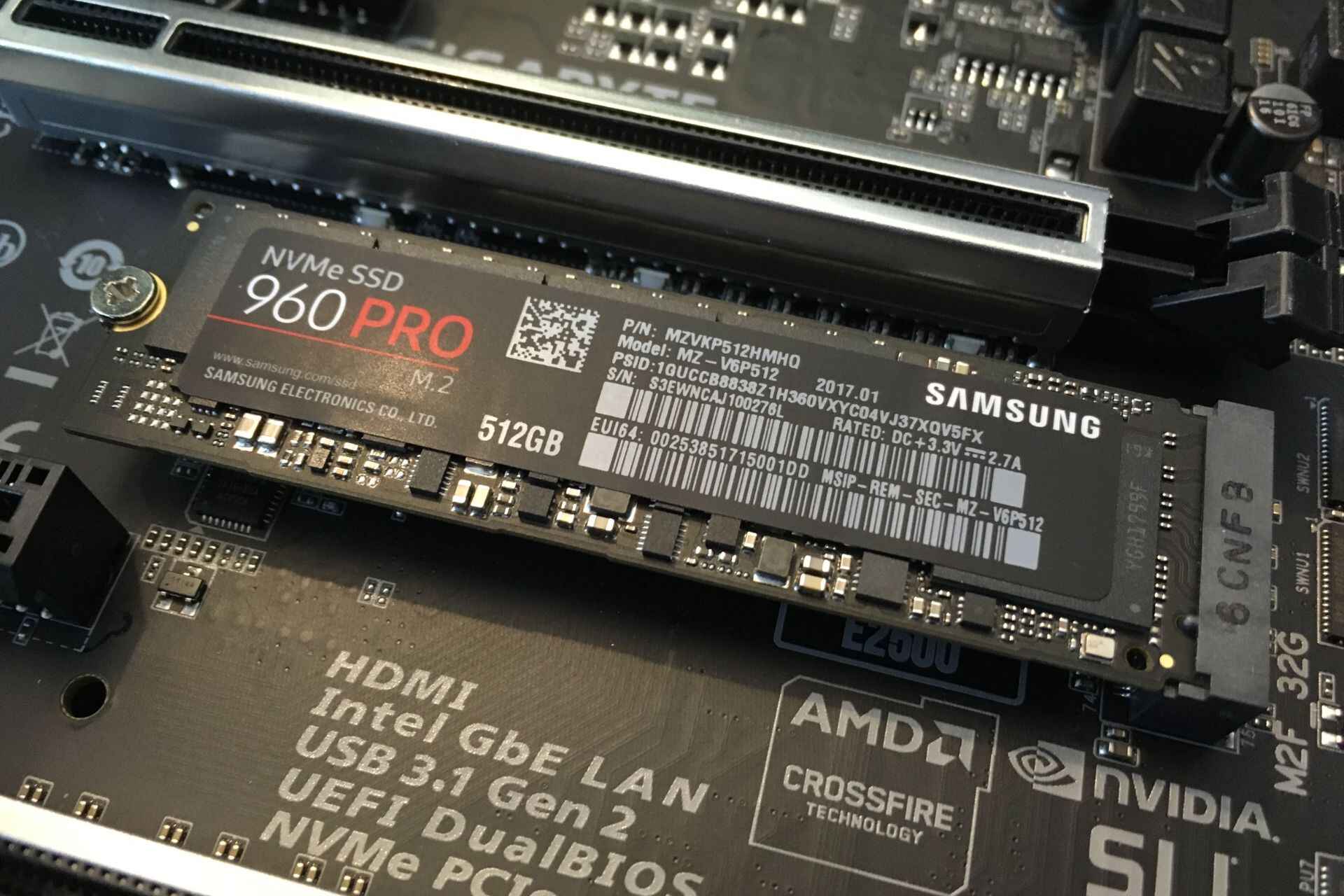Introduction
Welcome to the world of MacBook Air, the sleek and powerful laptop designed by Apple. When it comes to performance and storage, one term that you may have come across is SSD storage. But what exactly is SSD storage, and why is it important for MacBook Air?
SSD, or Solid-State Drive, is a type of storage device that uses flash memory to store and retrieve data. Unlike traditional Hard Disk Drives (HDD), which consist of spinning disks and mechanical parts, SSDs have no moving parts, making them faster, more efficient, and more reliable.
MacBook Air is known for its compact design, lightweight build, and impressive performance. One of the key factors that contributes to its exceptional performance is the integration of SSD storage. With an SSD, MacBook Air can quickly access and transfer data, resulting in faster boot times, snappier app launches, and seamless multitasking.
In this article, we will explore the benefits of SSD storage on MacBook Air, delve into the differences between SSD and HDD storage, provide guidelines for choosing the right amount of storage, and discuss how to upgrade SSD storage on your MacBook Air.
So, if you’re curious about SSD storage and its impact on the performance of your MacBook Air, read on!
What is SSD Storage?
SSD, which stands for Solid-State Drive, is a type of storage device that uses flash memory technology to store and retrieve data. Unlike traditional Hard Disk Drives (HDD), which use spinning disks and mechanical parts, SSDs have no moving parts. Instead, they rely on interconnected memory chips to store data.
This lack of moving parts is what sets SSD storage apart from HDD storage and makes it so advantageous. Without any mechanical components, SSD storage is much faster in terms of data access and transfer. This speed makes a significant difference when it comes to tasks such as booting up your MacBook Air, launching applications, and accessing files and documents.
Furthermore, the absence of moving parts in SSD storage makes it more durable and reliable. Traditional HDDs are susceptible to damage from drops, shocks, and vibrations due to their mechanical components. SSDs, on the other hand, are built to withstand such physical impacts, ensuring that your data remains safe even if accidents happen.
Another key feature of SSD storage is its power efficiency. SSDs consume less power compared to HDDs because they do not require energy to spin disks or move any mechanical parts. This efficiency not only extends the battery life of your MacBook Air but also contributes to a cooler and quieter operating environment.
Overall, SSD storage offers several advantages over traditional HDD storage. Its speed, durability, reliability, and power efficiency make it the ideal choice for a modern laptop like the MacBook Air. With SSD storage, you can experience faster performance, improved durability, and enhanced power efficiency, ultimately resulting in a better user experience.
Why is SSD Storage important for MacBook Air?
SSD storage plays a crucial role in enhancing the performance and usability of MacBook Air. Here are a few reasons why SSD storage is important for this popular laptop:
1. Faster Performance: The primary advantage of SSD storage is its incredible speed. Traditional hard drives rely on spinning disks and mechanical parts to retrieve data, which can lead to slower performance. In contrast, SSDs use flash memory, which allows for much faster data access and transfer speeds. With SSD storage, your MacBook Air can boot up in seconds, applications launch instantly, and file transfers occur almost instantly. This level of speed and responsiveness greatly improves your overall computing experience.
2. Increased Durability: MacBook Air is designed to be lightweight and portable, and SSD storage complements these attributes perfectly. Since SSDs have no moving parts, they are much more resistant to physical impact and vibration compared to traditional hard drives. This makes SSD-based MacBook Air more durable, ensuring that your data remains safe even when you’re on the go.
3. Energy Efficiency: Another key advantage of SSD storage is its energy efficiency. SSDs consume less power compared to HDDs since they don’t rely on spinning disks and mechanical components. This translates to longer battery life for your MacBook Air. Whether you’re working on the go or enjoying an extended movie marathon, SSD storage ensures that your laptop can keep up with your needs without draining the battery quickly.
4. Silent Operation: HDDs generate noise as the disks spin and the mechanical parts move. This noise can be distracting, especially in a quiet environment. On the other hand, SSD storage has no moving parts, resulting in silent operation. With SSD storage on your MacBook Air, you can enjoy a quieter computing experience, free from the familiar sounds of traditional hard drives.
Overall, SSD storage is essential for MacBook Air due to its superior speed, increased durability, energy efficiency, and silent operation. By incorporating SSD technology, MacBook Air provides a seamless computing experience, whether you’re working, playing, or simply browsing the web.
Benefits of SSD Storage on MacBook Air
SSD storage offers numerous benefits that greatly enhance the performance and user experience of MacBook Air. Let’s explore some of the key advantages:
1. Lightning-fast Speed: SSD storage significantly improves the speed and responsiveness of MacBook Air. With faster data access and transfer rates, tasks such as booting up, opening applications, and accessing files are completed in a fraction of the time compared to traditional hard drives. This increased speed allows you to work more efficiently and smoothly, without any frustrating lags or delays.
2. Improved Multitasking: The fast read and write speeds of SSD storage enable MacBook Air to handle multiple tasks simultaneously with ease. You can seamlessly switch between applications, work with large files, and run resource-intensive software without experiencing any performance issues. This allows for a smoother and more productive multitasking experience.
3. Enhanced Reliability: SSD storage is more reliable than traditional hard drives because it doesn’t contain any moving parts. As a result, it is less prone to mechanical failures, such as disk crashes or read/write head issues. This increased reliability gives you peace of mind, knowing that your important data is safe and secure.
4. Energy Efficiency: SSDs are more energy-efficient compared to HDDs, resulting in longer battery life for your MacBook Air. The power savings of SSD storage allow you to work, play, or browse the web for extended periods without worrying about running out of power. Whether you’re on the go or working remotely, the optimized battery life provided by SSD storage is a valuable asset.
5. Silent Operation: Unlike HDDs, which can produce noticeable noise due to their spinning disks and moving parts, SSD storage operates silently. This means that you can enjoy a noise-free environment while working or watching movies on your MacBook Air. The absence of mechanical noise adds to the overall comfort and user experience.
6. Compact and Lightweight: SSDs are more compact and lighter than traditional hard drives. This makes them the perfect storage solution for MacBook Air, which is renowned for its slim and lightweight design. With SSD storage, you can enjoy the benefits of ample storage capacity without sacrificing portability.
In summary, the benefits of SSD storage on MacBook Air include faster speed, improved multitasking capabilities, enhanced reliability, energy efficiency, silent operation, and a compact design. These advantages come together to provide a seamless and efficient computing experience, making SSD storage essential for maximizing the potential of your MacBook Air.
How does SSD Storage affect the performance of MacBook Air?
SSD storage has a significant impact on the performance of MacBook Air, enhancing its speed and overall responsiveness. Let’s explore how SSD storage improves various aspects of your MacBook Air’s performance:
1. Faster Boot Times: SSDs allow MacBook Air to boot up in a matter of seconds. Compared to traditional hard drives, which require time to spin up and access data, SSDs provide near-instantaneous access to stored information. This means that you can start working or browsing the web without any delay, maximizing your productivity and efficiency.
2. Speedy Application Launches: SSD storage dramatically reduces application launch times on MacBook Air. Applications that previously took seconds or even minutes to load up can now launch in the blink of an eye. This swift responsiveness allows you to switch between applications seamlessly, saving valuable time and enabling a smoother workflow.
3. Snappy File Transfers: With SSD storage, copying or transferring files on your MacBook Air becomes remarkably fast. Whether you’re moving large multimedia files or transferring documents, SSDs deliver high-speed read and write performance, ensuring that file transfers complete swiftly and efficiently. This means less waiting and more time for productive work or entertainment.
4. Seamless Multitasking: SSD storage enables MacBook Air to handle multitasking with ease. The fast read and write speeds allow multiple applications to run simultaneously without any noticeable lag or performance degradation. Switching between applications, running virtual machines, or working with resource-intensive software becomes a smooth and seamless experience, enhancing productivity and efficiency.
5. Quick Data Access: SSD storage provides near-instantaneous access to your data on MacBook Air. This means that opening files, browsing through folders, and searching for specific information becomes lightning-fast. Whether you’re accessing documents, media files, or your entire photo library, SSDs ensure a swift and responsive data access experience.
6. Enhanced Overall Performance: The combination of all these speed improvements results in a significantly enhanced overall performance for MacBook Air. The quick boot times, fast application launches, snappy file transfers, seamless multitasking, and swift data access contribute to a fluid and efficient user experience. Whether you’re working on demanding projects, editing videos, or simply browsing the web, the performance benefits provided by SSD storage elevate your MacBook Air to new heights.
In summary, SSD storage revolutionizes the performance of MacBook Air by drastically improving boot times, application launches, file transfers, multitasking capabilities, data access speed, and overall user experience. By choosing a MacBook Air with SSD storage, you can unlock the full potential of this sleek and powerful laptop.
SSD Storage vs. HDD Storage: What’s the difference?
When it comes to storage options for MacBook Air, one key decision to make is whether to go with SSD (Solid-State Drive) storage or traditional HDD (Hard Disk Drive) storage. Let’s explore the differences between these two storage technologies:
1. Technology: The fundamental difference between SSD and HDD storage lies in their technologies. HDDs rely on spinning magnetic disks and mechanical read/write heads to store and retrieve data. SSDs, on the other hand, use flash memory chips to store data. This lack of mechanical parts in SSDs makes them faster, more durable, and more reliable than HDDs.
2. Speed: SSD storage provides significantly faster data access and transfer speeds compared to HDD storage. Due to the absence of mechanical components, SSDs can access data almost instantly, resulting in faster boot times, quicker application launches, and snappier file transfers. HDDs, on the other hand, are limited by the mechanical nature of their operation, leading to slower overall performance.
3. Durability and Reliability: SSDs are more durable and reliable than HDDs because they do not have any moving parts. HDDs are susceptible to mechanical failures due to factors such as shocks, vibrations, and wear and tear. In contrast, SSDs are not affected by these issues, making them more resilient and less prone to data loss. SSD storage is particularly advantageous for MacBook Air users who frequently travel or work in environments where accidental drops or impacts may occur.
4. Power Efficiency: SSDs are more power-efficient compared to HDDs. HDDs consume more power as they rely on spinning disks and mechanical movements. In contrast, SSDs have lower power consumption since they use flash memory to store data. This power efficiency not only leads to longer battery life on MacBook Air but also results in less heat generation and a quieter operating environment.
5. Noise: HDDs can generate noise while in operation due to the spinning disks and mechanical parts. This noise can be noticeable and potentially distracting, especially in quieter environments. SSDs, on the other hand, have no moving parts and operate silently, providing a noise-free computing experience.
6. Capacity and Cost: Traditionally, HDDs have offered larger storage capacities at a more affordable price compared to SSDs. However, as SSD technology has advanced, the gap in storage capacity and cost between the two has narrowed. While SSDs may still be more expensive per gigabyte compared to HDDs, they offer faster performance and numerous other advantages that justify the investment for many MacBook Air users.
In summary, SSD storage and HDD storage differ significantly in terms of technology, speed, durability, power efficiency, noise, and cost. SSDs offer faster performance, enhanced durability, lower power consumption, silent operation, and a more compact form factor. While HDDs may provide larger storage capacities at a lower cost, the advantages of SSD storage make it the preferred choice for MacBook Air users who prioritize speed, reliability, and overall performance.
How much SSD Storage do I need for my MacBook Air?
Choosing the right amount of SSD storage for your MacBook Air depends on your specific needs and usage patterns. Here are some factors to consider when determining the appropriate storage capacity:
1. Usage: Consider the type of tasks you will be using your MacBook Air for. If you primarily use your laptop for basic web browsing, email, and word processing, a lower storage capacity, such as 128GB or 256GB, should be sufficient. However, if you work with large files, multimedia content, or resource-intensive software, you may require a higher storage capacity, such as 512GB or 1TB.
2. File Types: Different types of files require varying amounts of storage space. For example, documents, spreadsheets, and presentations typically take up relatively little space. On the other hand, multimedia files, such as high-resolution photos, videos, and music, can consume a significant amount of storage. Consider the types of files you work with and their sizes to estimate your storage needs accordingly.
3. Future Expansion: It’s important to consider your future storage needs when selecting SSD capacity for your MacBook Air. If you anticipate your data storage requirements to grow over time or if you plan to install additional software or games, it’s advisable to opt for a higher storage capacity from the start. This will provide room for future expansion, eliminating the need for frequent data management or upgrades.
4. Cloud Storage and External Drives: Keep in mind that you can also utilize cloud storage services, such as iCloud or Dropbox, to offload some of your files and free up space on your MacBook Air’s SSD. Additionally, external storage devices, such as portable hard drives or USB flash drives, can be used to store larger files or infrequently accessed data, helping to manage your local storage requirements more efficiently.
5. Budget Considerations: SSD storage capacity directly affects the cost of your MacBook Air. Higher storage capacities typically come at a higher price point. Therefore, it’s important to consider your budget and weigh it against your storage needs. It may be beneficial to find a balance between the required storage capacity and your budget to ensure you are making a cost-effective decision.
Ultimately, the right SSD storage capacity for your MacBook Air depends on your individual requirements and preferences. Assess your usage patterns, file types, future expansion needs, and budget constraints to determine the most suitable amount of storage. Finding the right balance will ensure that your MacBook Air provides optimal performance and meets your data storage needs without excessive cost or wasted space.
Tips for choosing the right SSD Storage for MacBook Air
When it comes to choosing the right SSD storage for your MacBook Air, there are a few important factors to consider. These tips will help you make an informed decision and ensure that you select the optimal storage capacity:
1. Assess Your Needs: Start by evaluating your usage patterns and storage requirements. Consider the type of tasks you perform on your MacBook Air and the types of files you work with. This assessment will give you an idea of the minimum storage capacity you should consider.
2. Consider Future Growth: Keep in mind that your storage needs may change in the future. Consider whether you anticipate your data storage requirements to increase over time. If so, it may be wise to invest in a higher storage capacity from the beginning to accommodate future growth without needing to upgrade.
3. Optimize Storage: Take advantage of macOS’s built-in storage optimization features, such as optimizing storage in iCloud or using Optimized Storage. These features allow you to seamlessly store infrequently used files in the cloud or on external drives, freeing up space on your MacBook Air’s SSD.
4. Utilize Cloud Storage: Consider utilizing cloud storage services, such as iCloud, Dropbox, or Google Drive, to store and access your files remotely. This can help reduce the need for large local storage capacity and allow you to access your files from any device with an internet connection.
5. External Storage Options: If you frequently work with large files or require additional storage, consider investing in external storage options like portable hard drives or USB flash drives. These devices can offer additional storage space and allow you to quickly transfer files between your MacBook Air and other devices.
6. Budget Considerations: Keep your budget in mind when selecting SSD storage for your MacBook Air. Higher storage capacities typically come at a higher cost. Determine your storage needs based on your budget constraints and find a balance that meets your requirements without breaking the bank.
7. Check Compatibility: Ensure that the SSD storage you choose is compatible with your specific model of MacBook Air. Check the manufacturer’s specifications and compatibility guidelines to ensure a seamless integration and optimal performance.
By considering these tips, you can effectively choose the right SSD storage for your MacBook Air. Assessing your needs, considering future growth, optimizing storage, utilizing cloud storage, exploring external storage options, and staying within budget will allow you to make a well-informed decision and maximize the storage capabilities of your MacBook Air.
How to upgrade SSD Storage on MacBook Air
If you find that you need more storage capacity on your MacBook Air, you have the option to upgrade the SSD storage. Here’s an overview of the steps involved in upgrading the SSD storage on your MacBook Air:
1. Check Compatibility: Before proceeding with an SSD upgrade, ensure that the new SSD is compatible with your specific model of MacBook Air. Consult the manufacturer’s documentation or website to verify compatibility and identify the appropriate SSD model for your MacBook Air.
2. Back up Your Data: It’s crucial to back up all your important data before performing any hardware modifications. This ensures that you don’t lose any files during the upgrade process. Use Time Machine or another backup solution to create a complete backup of your MacBook Air’s data.
3. Gather Tools and Materials: To perform the SSD upgrade, you’ll need a set of screwdrivers compatible with MacBook Air, an SSD enclosure or adapter (to transfer data from the old SSD to the new one if necessary), and the new SSD that you purchased.
4. Open your MacBook Air: Follow the specific instructions provided by Apple or consult online guides to open your MacBook Air and access the SSD. Be sure to handle the hardware with care and take necessary precautions to avoid static electricity discharge while working on the internals of your laptop.
5. Remove the old SSD: Once you have accessed the internal components of your MacBook Air, locate the existing SSD and carefully disconnect it from its slot. Depending on the model of MacBook Air, the SSD may be held in place with screws or connectors. Remove these connections or screws to remove the old SSD from the laptop.
6. Install the new SSD: Take the new SSD and insert it into the appropriate slot or connector, following the instructions provided by the manufacturer. Ensure that the SSD is inserted correctly and firmly secured in place. If necessary, transfer data from the old SSD to the new one using an SSD enclosure or adapter.
7. Reassemble and Test: Once the new SSD is installed, carefully reassemble your MacBook Air by following the reverse order of the disassembly steps. Double-check all connections and ensure that everything is securely in place. Once reassembled, power on your MacBook Air and verify that the new SSD is recognized and functioning correctly.
Note: If you are not comfortable performing the upgrade on your own, it’s recommended to seek assistance from a professional or an authorized Apple service center to avoid any potential damage to your MacBook Air.
By following these steps, you can successfully upgrade the SSD storage on your MacBook Air and enjoy the benefits of increased storage capacity. However, if you are unsure about performing the upgrade yourself, it’s always recommended to consult with an expert or a professional service provider to ensure a smooth and safe SSD upgrade process.
Conclusion
SSD storage is a vital component that greatly enhances the performance and usability of MacBook Air. With its lightning-fast speed, increased durability, and energy efficiency, SSD storage provides a seamless computing experience for MacBook Air users.
Throughout this article, we explored the importance of SSD storage for MacBook Air, discussing its impact on performance, the benefits it offers, and the differences between SSD and HDD storage. We also provided tips for choosing the right SSD storage capacity and outlined the steps involved in upgrading the SSD on your MacBook Air.
By opting for SSD storage, MacBook Air users unlock the potential for faster boot times, quicker application launches, seamless multitasking, and improved overall performance. SSDs also offer enhanced reliability, longer battery life, silent operation, and a compact form factor to complement the sleek design of MacBook Air.
When choosing the right SSD storage for your MacBook Air, consider your usage patterns, future growth potential, and budget constraints. Additionally, leverage storage optimization features, cloud storage solutions, and external storage options to maximize available space and efficiently manage your data.
If you find that your current SSD storage is insufficient, upgrading the SSD is a viable option. However, it is essential to follow the recommended steps and seek professional assistance if needed to ensure a successful and safe upgrade process.
In conclusion, SSD storage is an indispensable component that enhances the performance and storage capabilities of MacBook Air. By choosing the right SSD storage capacity and utilizing various storage management techniques, you can optimize your MacBook Air’s performance and enjoy a smooth and efficient computing experience.







